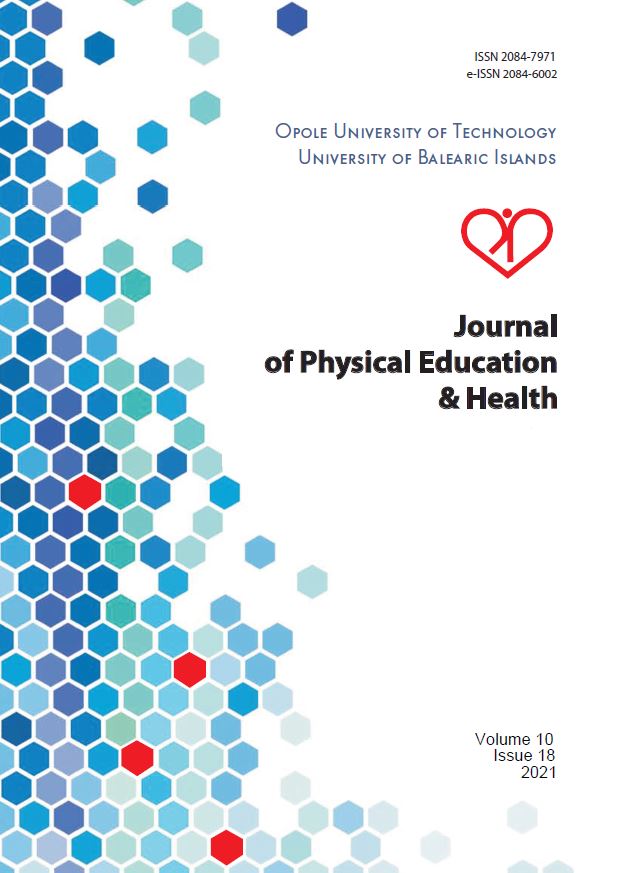Abstract
One of the indicators of an optimally conducted training process is the athlete's achievement of sports success in all age categories. The analysis of sports career development is helpful in determining the periods of maximizing and maintaining sports results, but also in choosing the development path leading to the achievement of top-level results at the senior age. The aim of the study was to assess the development of sports championship in the 400-metre dash, comprising sports careers of 400 m medalists of the World Cadet and Junior Championships and European Junior Championships in the most important sports events in the senior age category, namely the European Championships, World Athletics Indoor Championships, World Championships, and the Olympic Games. The analysis involved a group of 69 male and 69 female medalists of the European Junior Championships, 27 male and 27 female medalists of the World Youth Junior Championships as well as a group of 48 male and 48 female medalists of the World Junior Championships in the 400 m. The research revealed that from 4% to 7% of the World Cadet Championships medalists and 1-3% of the male and 4-6% of the female medalists of the European Junior Championships achieved their highest sports success by winning medals at the World Championships and the Olympic Games. 6% to 10% of the studied World Junior Championships male medalists were successful in the World Championships. Among the World Championships female medalists, 12% won medals at the World Athletics Indoor Championships, 6% won medals at the World Championships, and 2% won the Olympic Games medals.
References
Płatonow W. N. Das langfristige Trainingssystem endet nicht mit dem Erreichen des Leistungshöhepunkts. Leistungssport 2004; 1: 18–22.
Sozański H. Ku poprawie efektywności systemu szkolenia sportowego. In: Moska W., Jaszczur-Nowicki J. (eds.) Kierunki optymalizacji treningu i systemu szkolenia w sporcie wyczynowym- retrospekcja i perspektywy. Gdańsk: AWFiS, 2012, pp. 19–34.
Adamczyk G., Sozański H. Niektóre podobieństwa i różnice w treningu lekkoatletycznym wczesno i późno dojrzewających zawodników. Magazyn lekkoatletyczny 2015; 5/6: 1–5.
Sozański H. Podstawy teorii treningu sportowego. Warszawa: COS, 1999.
Sozański H. Progresywny i intensywny rozwój karier sportowych – uwarunkowania, specyfika, konsekwencje. In: Szkolenie uzdolnionej sportowo młodzieży w polskim systemie edukacyjnym. Warszawa: PTNKF, 2003, pp. 12–31
Zając A., Wilk M., Poprzęcki S., Bacik B. Współczesny trening siły mięśniowej. Katowice: AWF, 2009.
Sozański H., Czerwiński J., Sadowski J. Podstawy teorii i technologii treningu sportowego. (vol. 2). Warszawa, Biała Podlaska: AWF, 2015.
Susłow F. P., Sycz W. L., Szustin B.N. Sowremiennaja sistema sportiwnoj podgotowki. Moskwa: SAAM, 1995.
Bompa T. O., Fox J. Theory and methodology of training: the key to athletic performance. Iowa: Dubuque, 1999.
Sozański H., Zaporożanow W. Kierowanie jako czynnik optymalizacji treningu. Warszawa: Resortowe Centrum Medyczno-Szkoleniowe Kultury Fizycznej i Sportu, 1993.
Płatonow W. N., Sachnowski K., Ozimek M. Sowriemiennaja strategia mnogoletniej sportiwnoj podgotowki. Nauka w olimpijskom sportie 2003; 1: 3–13.
Vaeyens R., Güllich A., Warr C., Phillippaerts R. Talent identification and promotion programmes of Olympic athletes. Journal of Sports Sciences 2009; 27(13): 136–138.
Quercetani R. L. A world history of the one lap race. 1850-2004. “The killer sprint” Milan: SEP Editrice, 2005.
Letzelter M. Zur Theori des 400-m Laufs. Hochheim am Main: Schors-Verlag, 1979.
Iskra J., Walaszczyk A., Skucha J. Trening mistrzowski w biegach sprinterskich. Katowice/Warszawa: AWF/PZLA, 2015.
Bompa T. O., Haff G. G. Periodyzacja. Teoria i metodyka treningu. Warszawa: Biblioteka Trenera, 2015.
Iskra J., Pietrzak M., Szczęsna M. Gwiazdoń P. The development of results in 100m and 400m sprint races in athletes aged from 6 to 100. Journal of Physical Education & Health 2017; 6(9): 27–38.
Karvonen M. J. Age and performance in athletics. Arbeitsphysiology 1955; 16: 110–119.
Matthews P. Athletics 2016 - The Track Field Annual. Cheltenham, UK: Sportsbooks Ltd, 2016.
Butler M. IAAF Olympic Games. Rio de Janeiro 2016. Statistic Handbook. Monaco: IAAF/ATFS, 2016.
Brown J. Sports talent: How to identify and develop outstanding athletes. Champaign: Human Kinetics, 2001.
Czajkowski Z. Nowe spojrzenie na etapy szkolenia. Sport wyczynowy 1995; 1/2: 55–63.
Hollings S. C. World junior success is a prerequisite for world senior success. Modern Athlete and Coach 2006; 1: 14–17.
Hollings S. C., Hume P. Is success at the IAAF World Junior Athletics Championships a prerequisite for success at World Senior Championships or Olympic Games? New Studies in Athletics 2010; 2: 65–77.
Hopkins W. G. Competitive performance of elite track-and-field athletes: Variability and smallest worthwhile enhancements. Sportscience 2005; 9: 17–20.
Iskra J. Ontogeneza sportowa w lekkoatletycznych konkurencjach szybkościowych. In: Kowalski P. (ed.) Problemy badawcze w lekkoatletyce. Wrocław: AWF, 2005, pp. 43–46.
Iskra J., Wojnar J., Walaszczyk A. Skuteczność szkolenia sprinterów i płotkarzy w systemie przygotowań olimpijskich. In: Kuder A., Perkowski K., Śledziewski D. (eds.) Proces doskonalenia treningu i walki sportowej. Warszawa: AWF, 2005, pp. 144–146.
Walaszczyk A., Szade B. Przebieg kariery sportowej najlepszych juniorów i juniorek europy w konkurencjach szybkościowych. In: Socha S. (ed.) Problemy dymorfizmu płciowego w sporcie (part 2). Katowice: AWF, 1995, pp. 249–252.
Hanley B. The role of the European U23 Championships in the Development of Elite Athletes, New Studies in Athletics 2014; 3: 41–56.

This work is licensed under a Creative Commons Attribution-ShareAlike 4.0 International License.
Copyright (c) 2021 Array

